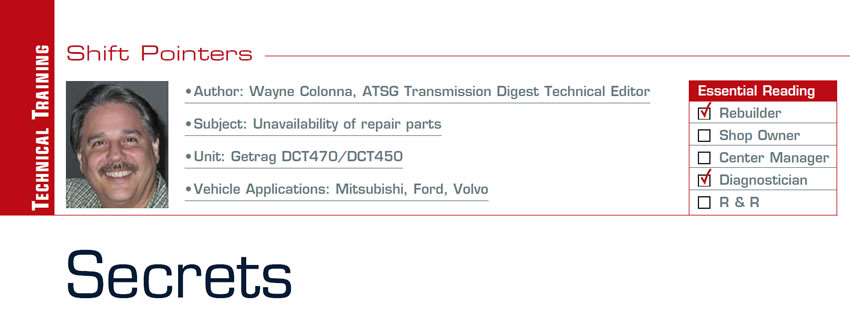September 2012 Issue
In This Issue
Toyota U150/250: shift complaints
Toyota A540/541E-series: Engine chugs coming to a stop
VW Jetta 09A/JF506E: no start; TCM-related codes
VW/Audi 09G, 09K, 09M: no movement
VW 09A/JF506E: no upshifts when cold
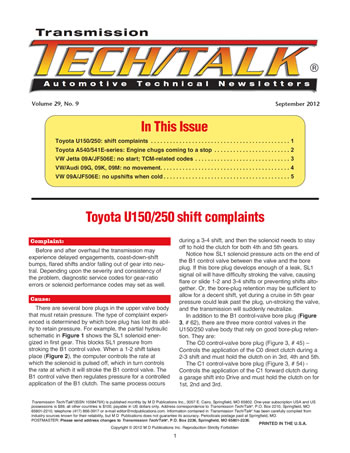
ZF Industries: More than just Transmissions
Several weeks ago my partner Brian Johnston and I traveled to Chicago to visit ZF Industries’ North American headquarters in Vernon Hills, Ill. We have had a very long relationship with ZF as a distributor of its products. When Ford decided to stop offering a manual transmission in its full-sized pickup trucks, it caused a decline in our sales of ZF manual transmissions and of parts for the five- and six-speed series of transmissions.
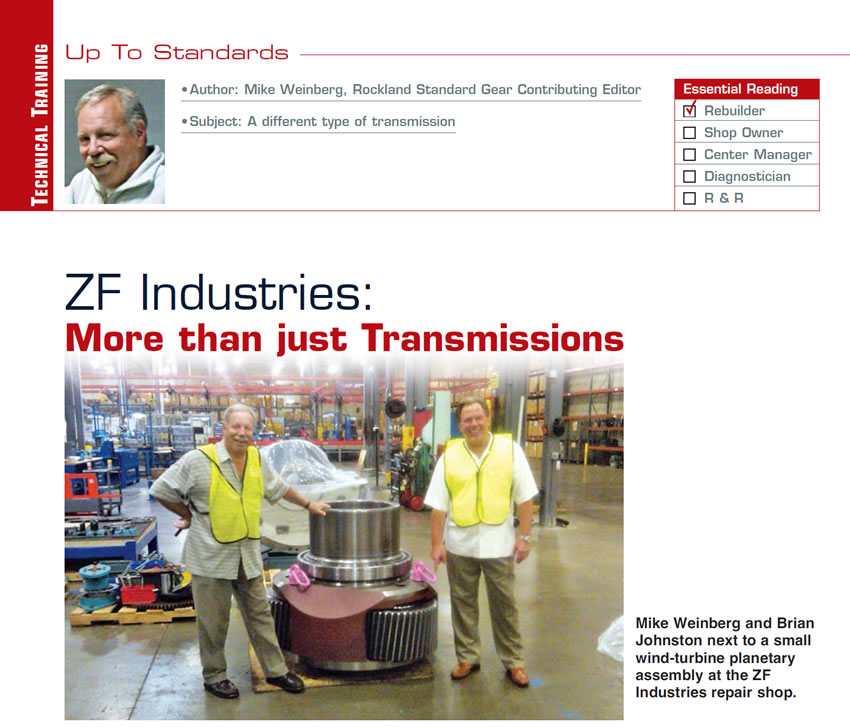
No Tech to High Tech
The source of the confusion seems to come when shop owners mix how and where we access our business tools used to manage our transmission shops. For example, If your production board is at the shop, unless you call and ask you have to go to the shop to see what is going on with production. If your lead sheet is at the shop, you have to go to the shop to view it.
If your parts invoices for the week are in a stack of papers in the back office, if your cash collected for the week is on a computer program at the shop, if your sales records are at the accountant’s office, if your production reports are in your car, if your vendor list is on a piece of paper taped to the wall at the shop and your checkbook in is in your desk at home, you “might” be caught up in the confusion I am talking about.
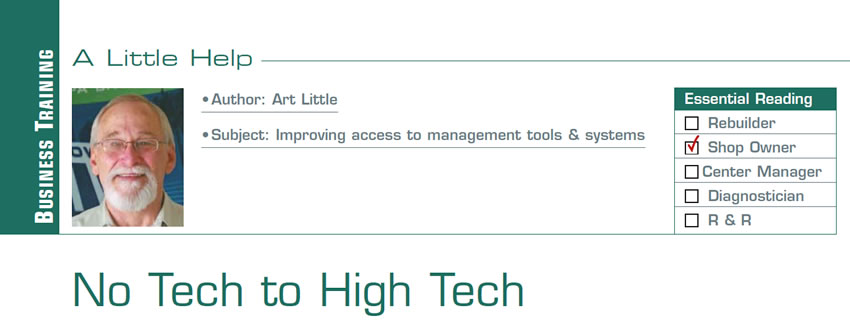
Serviceability Report: Chevy Cruze
This is another in a series of reports that asks a simple question: Do the automotive engineers look at “ease of service” when designing a new car?

It’s not What You Do, It’s the Way You Do It!
Presentation is critical in dealing with comebacks or other customer concerns
Good intentions are wonderful, but they are only a concept until they are put into action and properly executed. For example, you may be more than willing to take care of a comeback or other not-so-enjoyable customer situation, but is that what your voice and mannerisms convey to your customers?
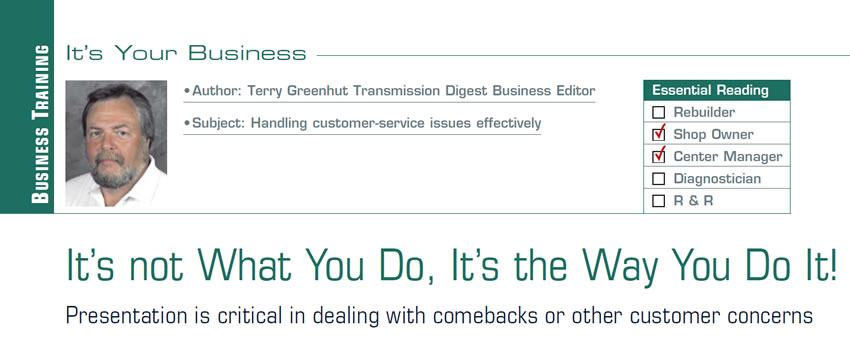
Al Turner
The Technically Speaking article in the June issue of Transmission Digest was an article called A Twist of Fate. The subject matter was the effects produced when an AS68RC transmission’s stator shaft turns in the pump cover. The article briefly mentioned a similar issue with the Allison 1000/2000 transmission. This comment prompted several people to call asking for more information about it.
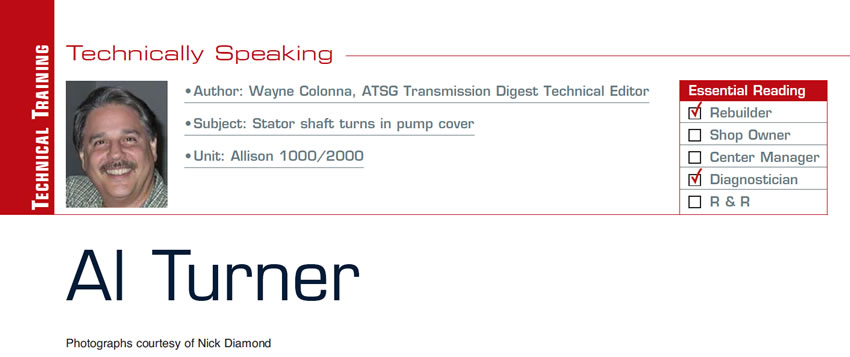
‘Why should I pay for diagnosis?’
A 2003 Lincoln LS with a 3.9-liter V-8 and 5R55S transmission came into our shop with a grocery list of codes stored, no power, and it didn’t shift. I scanned for codes, found P0715, 717, 718, 731, 732, 733, 734, 745 and P2106. As you can see it had turbine-speed-sensor codes, gear-ratio codes, pressure-control fault and a forced limited power from the TAC. My first thought was that the turbine-speed sensor had failed and as a result of continued driving set the other codes.
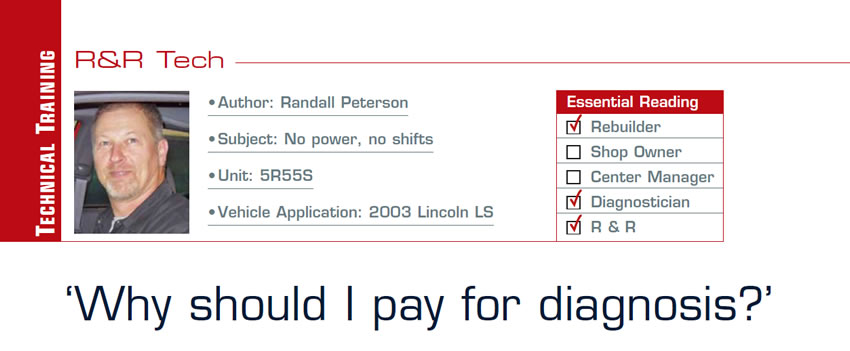
FNR5/4F27E and Code P0741
There are a couple of wear areas in the FNR5 and 4F27E that can cause converter-slip codes to set. Some of the factory trouble-code charts would lead you to believe that a solenoid was bad, because they send you to test the solenoid first. The best thing to do is to determine how the code is setting, and then you can determine where to look for the cause of the code.
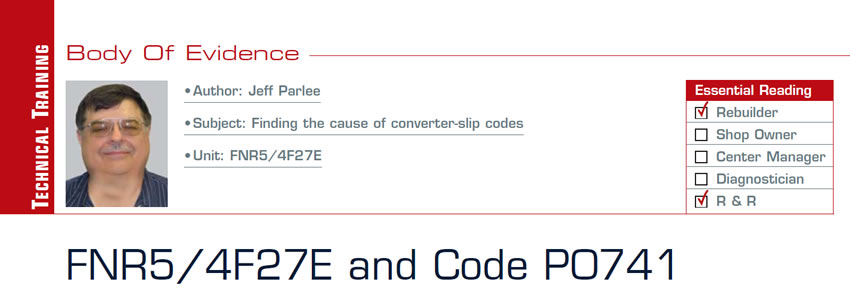
Active Radius
Many newer-design clutch friction discs are designed with a thinner band of friction material than the original disc that came in the vehicle. The thinner band of material on the newer design may seem like a bad thing to some technicians as they compare the new parts with the ones that came out of the vehicle. Conventional thinking would be that more is better; more friction material will mean a stronger clutch.
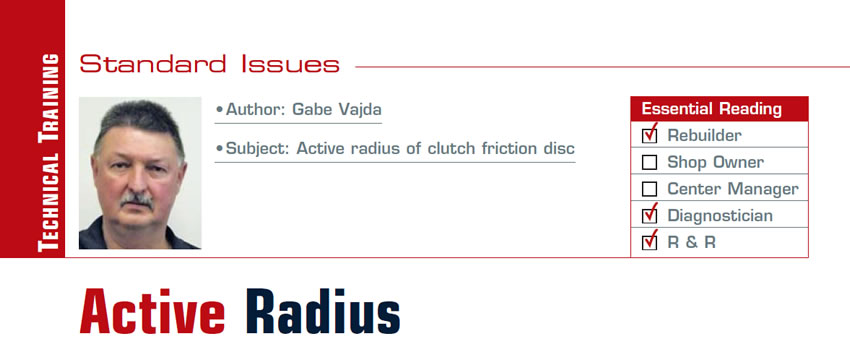
Secrets
From one perspective it appears that the government and the manufacturers are working hand in hand to dismantle the aftermarket repair industry. Of course, their view is different. The government is concerned about fuel economy and emissions. So it places on the manufacturers CAFE ratings and emissions demands that have in many ways accelerated this technological advancement to meet those demands. Then, of course, there is competition among manufacturers to meet customer demands for as many comforts as the vehicle can offer.
